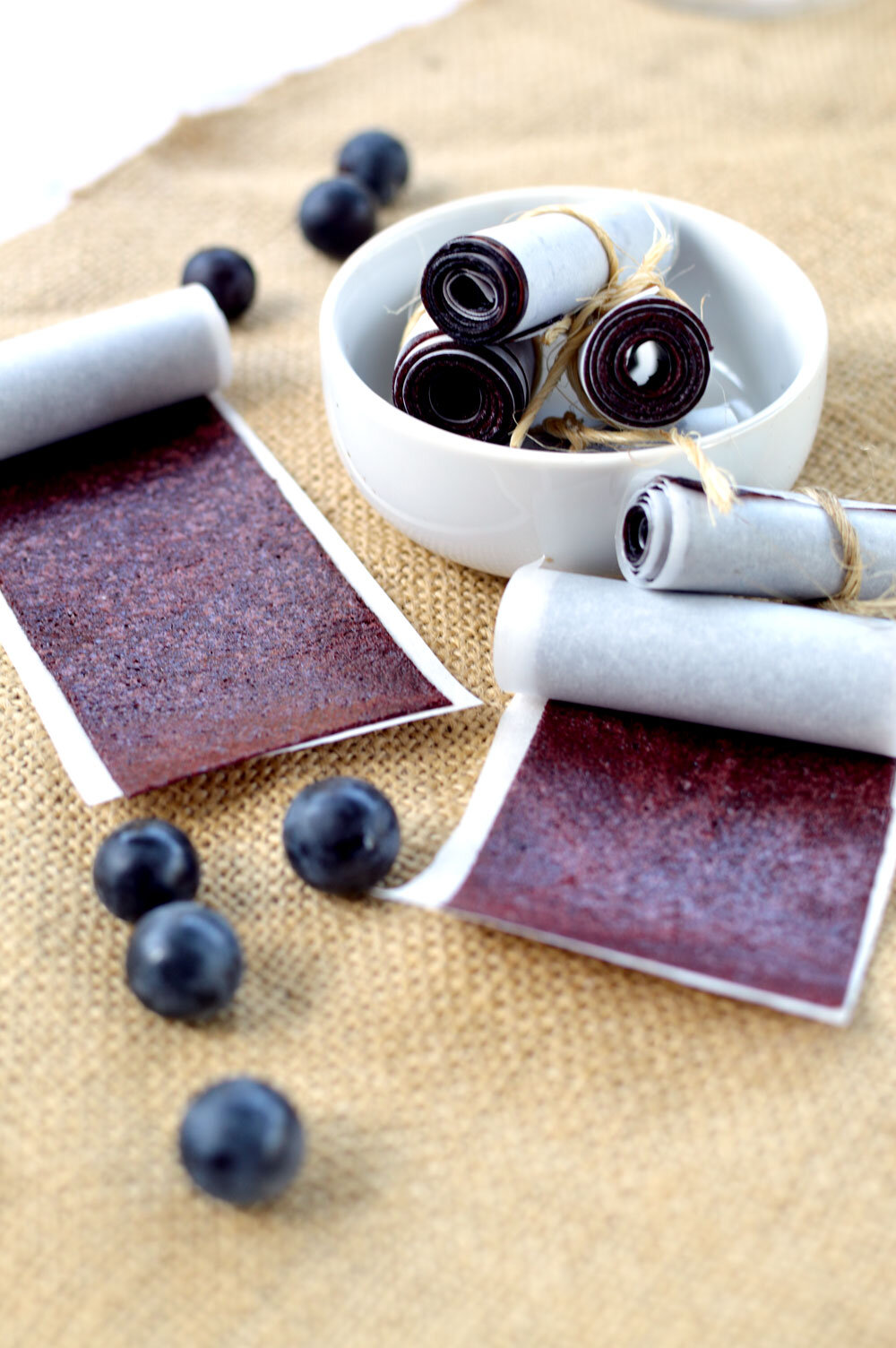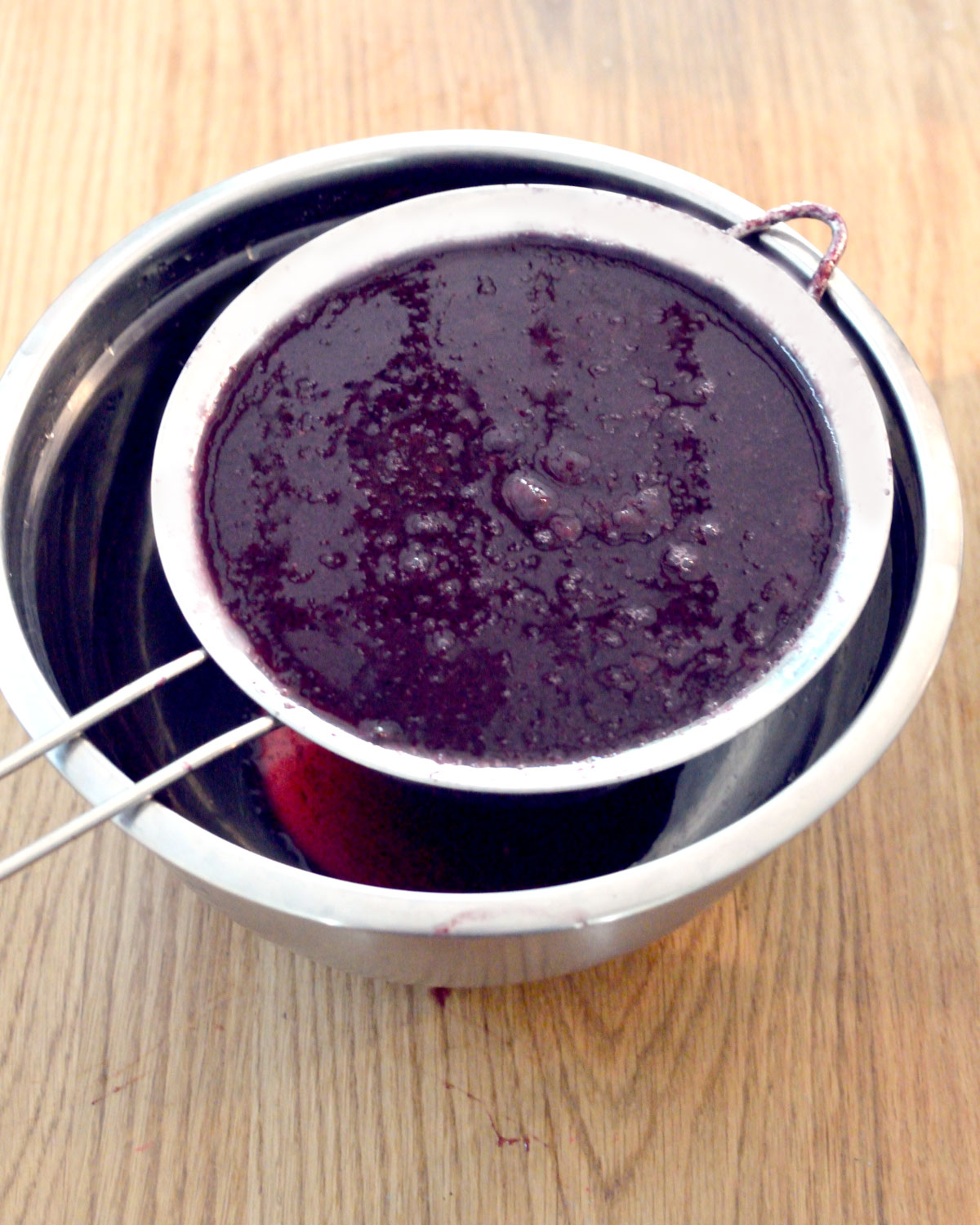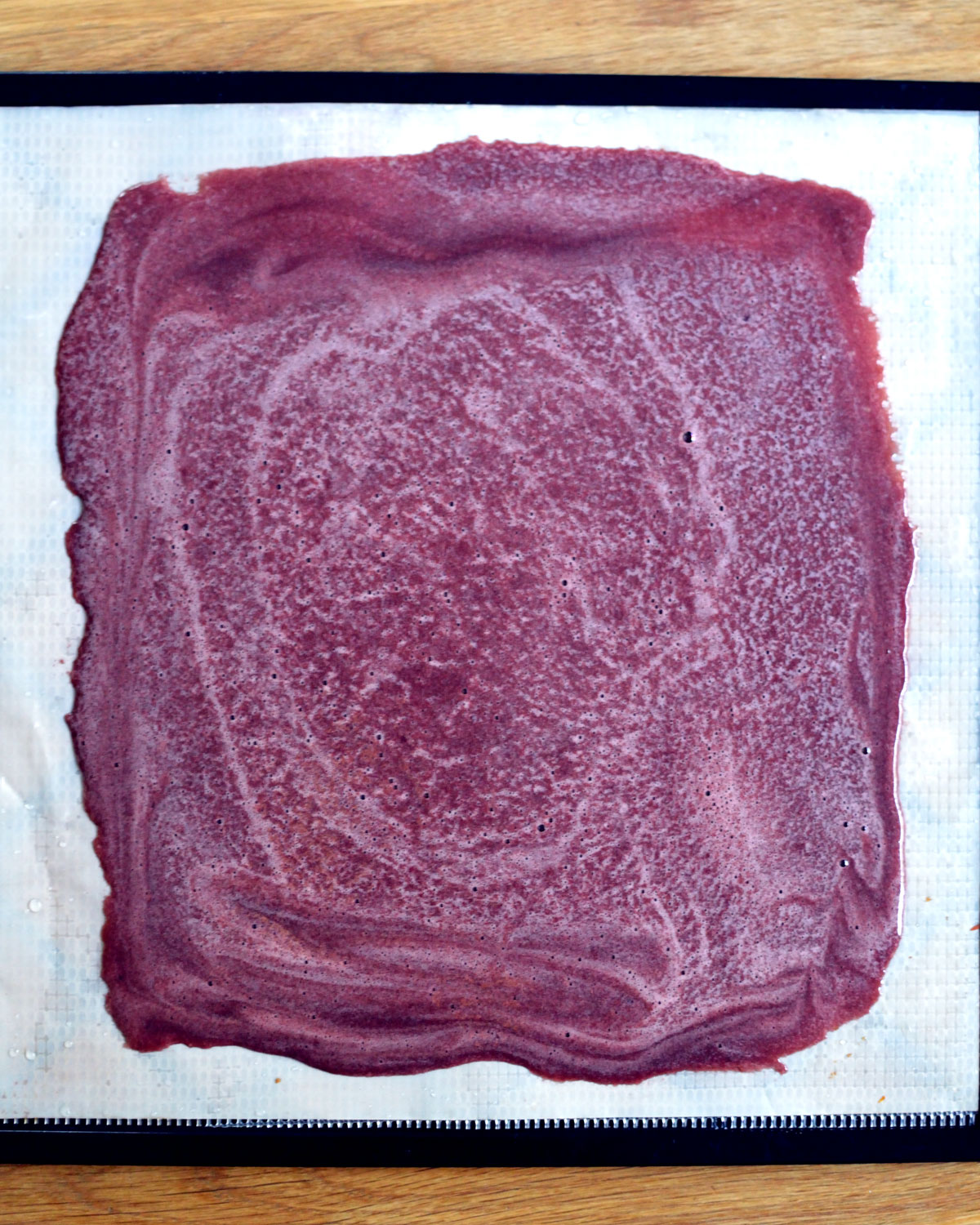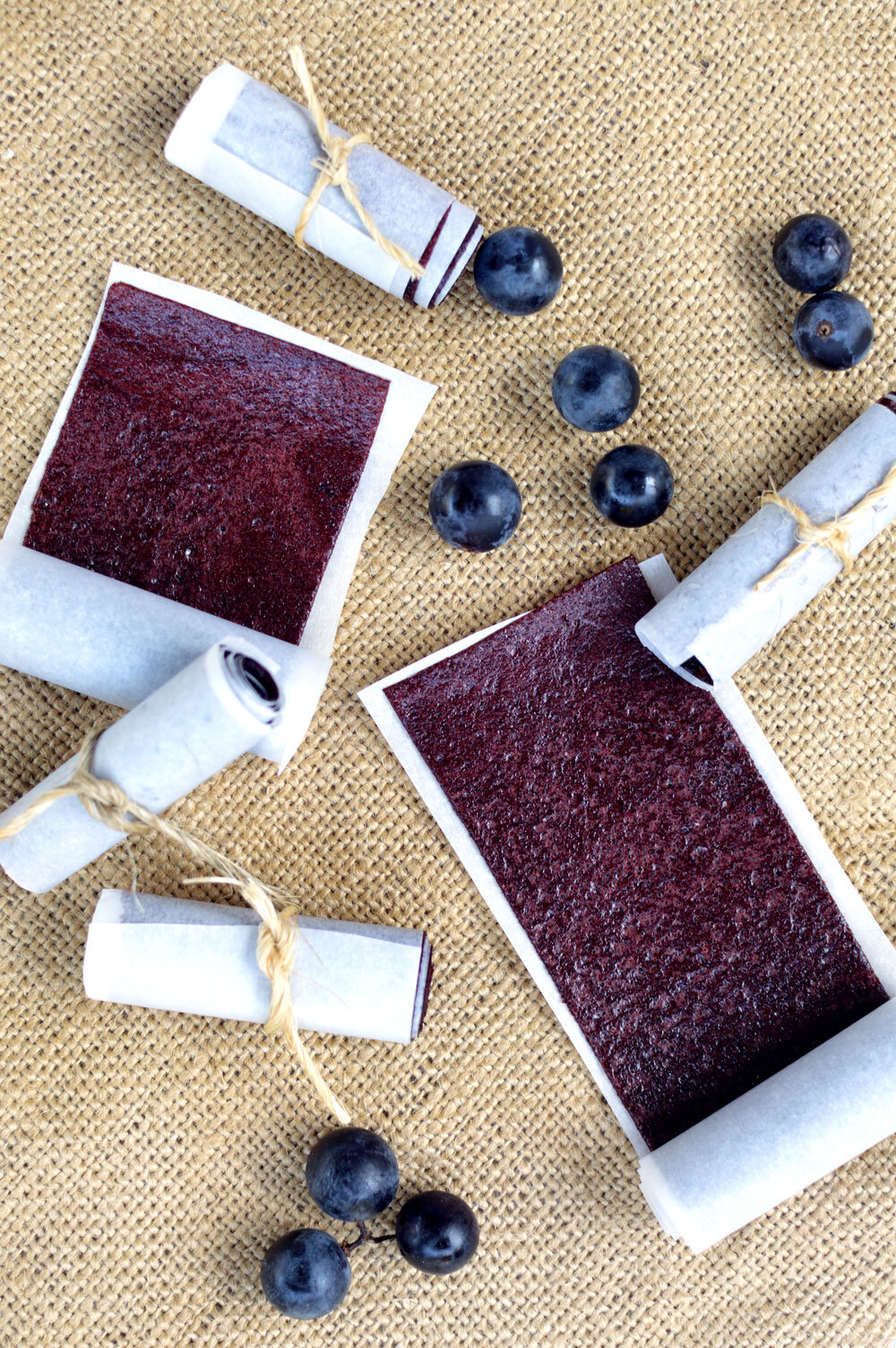Raw Grape Fruit Leather Recipe
The first time I made grape fruit leather, it was unintentional. I was making grape juice to can and had a bunch of pulp left over. I spread it on dehydrator trays thinking it wouldn’t turn out but it actually did!
I wanted to try making it again but without heating up the grapes past 105ºF so it would still be a living food. I was making this side by side with an oven fruit leather recipe and there was a huge difference in taste. The oven version (cooked at 170ºF), had an almost burnt taste while the raw fruit leather was intensified and highlighted the grape flavor. You can tell by the color that much of the nutrition is preserved.
This post contains affiliate links. Here is the full disclosure.
This is a tasty snack for adults and kids alike!

1. Press all the grapes through a food mill or sauce maker. Use the proper attachments for crushing grapes, my sauce maker uses a special grape spiral sold separately. If you don’t have one, I’ve linked it down in the recipe card. The grape spiral allows the seeds to go through without getting all crushed up in your juice and pulp.

2. After you run it through the food mill once, take all the skins and left over pulp and push them through the food mill one more time. It will be a little more difficult to get it all through but will extract quite a bit more juice and pulp.
3. Discard the grape skins and seeds into the compost. And save the juice/pulp that came out of the food mill. I had about 5 + 1/4 cups liquid when I was finished.
4. Now you need to separate the juice and pulp. Grab a metal food sieve and place over a large bowl.

5. Pour the liquid through it. The pulp should stay in the food sieve, while the majority of the juice will drain out the bottom. You should have about 3 cups of pulp remaining. If using honey, whisk it into the pulp until thoroughly mixed.

6. The juice is a natural by product of making this recipe and is not used for the fruit leather. Its really delicious. If you don’t want to consume it right away, store in the refrigerator for up to 4 days.
7. Next you have a few options. You can skip right to step 8 and place on trays, or you can blend the pulp in a blender for a smoother more uniform finished product. I tested both methods and they both worked.
8. Take the remaining 3 cups of pulp and spread it on dehydrator trays with mats. The perfect thickness to start with when spreading the pulp is 1/4 inch deep. No more, no less. I actually get out a ruler and measure! It may still be a little juicy and difficult to maintain that thickness at the edge. Just do your best. If using an excalibur dehydrator it will make 2 and a half trays.

9. Dehydrate in a dehydrator at 105ºF for about 12 hours. It should feel dry when finished but maintain it’s flexibility.

10. Let cool completely and then peel it off the mat. It will be a little difficult to get started if your edges were thinner but it should all come off in one piece.
11. Place the fruit leather onto parchment paper and cut both the fruit leather and parchment paper into 2 inch wide strips.

12. Roll up fruit leather and tie with string. Store in an airtight container in a cool, dark place.


Raw Grape Fruit Leather
Equipment
- Blender (optional)
Ingredients
- 4 lbs Sungold or Concord Grapes Stems Removed and Rinsed
- 2 Tablespoons Honey Optional
Instructions
- Press all the grapes through a food mill or sauce maker. (Use the proper attachments for crushing grapes, my food mill uses a special grape spiral)
- After you run it through the food mill once, take all the skins and left over pulp and push them through the food mill one more time. It will be a little more difficult to get it all through but will extract quite a bit more juice and pulp.
- Discard the grape skins and seeds into the compost. And save the juice/pulp that came out of the food mill. I had about 5 + 1/4 cups liquid when I was finished.
- Now you need to separate the juice and pulp. Grab a metal food sieve and place over a large bowl.
- Pour the liquid through it. The pulp should stay in the food sieve, while the majority of the juice will drain out the bottom. You should have about 3 cups of pulp remaining.
- The juice is a natural by product of making this recipe and is not used for the fruit leather. Its really delicious. If you don’t want to consume it right away, store in the refrigerator for up to 4 days.
- Next you have a few options. You can skip right to step 8 and place on trays, or you can blend the pulp in a blender for a smoother more uniform finished product. I tested both methods and they both worked.
- Take the remaining 3 cups of pulp and spread it on dehydrator trays with mats. The perfect thickness to start with when spreading the pulp is 1/4 inch deep. No more, no less. I actually get out a ruler and measure! It may still be a little juicy and difficult to maintain that thickness at the edge. Just do your best. If using an excalibur dehydrator it will make 2 and a half trays.
- Dehydrate in a dehydrator at 105ºF for about 12 hours. It should feel dry when finished but maintain it’s flexibility.
- Let cool completely and then peel it off the mat. It will be a little difficult to get started if your edges were thinner but it should all come off in one piece.
- Place the fruit leather onto parchment paper and cut both the fruit leather and parchment paper into 2 inch wide strips.
- Roll up fruit leather and tie with string. Store in a cool, dark place.

